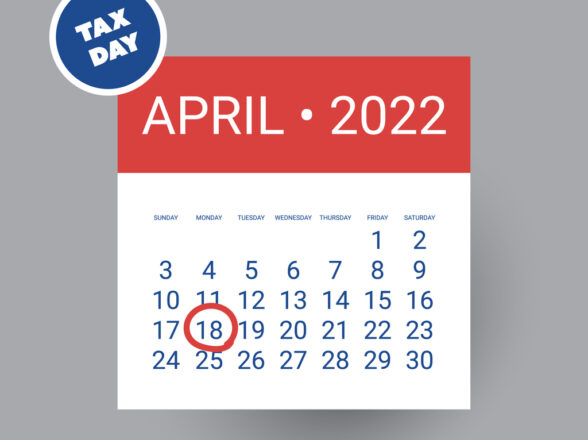Blog
The Three Types of Stock Option Vesting Schedules

There’s a first time for everything regarding vesting schedules. In the business world, many professionals have their first encounter with the stock market through company stock options. Maybe you were offered stock options in a job offer, or perhaps your first stock options were offered after a well-earned promotion into the upper levels of your company. Stock options are a great way to become invested in the company you work for and start building long-term plans for both your career and your finances.
However, one of the aspects of stock options that many people struggle with is the vesting schedule. You see, most stock options plans don’t make the stocks available right away. The discounted price that you are offered for stocks may not even be at its most profitable point at the moment of offer. Instead, you must work for the company for a certain number of years as you wait for your stock options to “vest”. Once the vesting period is over, you will have the option to buy your company stock at the grant price and add them to your stock market portfolio.
The Three Types of Vesting Schedule
How exactly do stock vesting schedules work? There are actually three different types of vesting schedules.
- Immediate
- Cliff
- Graded
These three types of vesting schedule will define how long you have to wait for your stock to become available and whether you get all your stock at once. It’s important to be clear on exactly how your stock vests and how long it will take for all of your stock to vest before you sign a new employment contract that includes stock options. Let’s take a closer look at the vesting schedules along with a few tips on how to optimize your plans based on the schedule you are offered.
1) Immediate Vesting Schedule
An immediate vesting schedule is exactly what it sounds like. There’s no schedule at all. Once the contract is finalized, the stock offered immediately becomes available at the grant price, available until whatever date your contract notes that the option expires.
This is the most uncommon stock option vesting schedule. Very few companies offer immediate vesting, and you’re more likely to see this option with startups who can’t guarantee the value of their stock in a few years. Immediate vesting is a direct hiring or promotion incentive in which you gain the opportunity to buy and the monetary value of the discounted price on the spot.
Tips
The thing to know about immediate vesting schedules is that you don’t have preparation time built-in. While many find vesting schedules frustrating, they do give you time to get your savings, finances, and investment portfolio in order so that you’re in the best place to buy.
Don’t actually buy your stock options immediately, even though they are available immediately. Start by doing the necessary due-diligence; determine if your company stock is actually a good investment, first. Then take the time to talk with your financial manager, decide how much you can afford to spend on investments. Build a balanced stock portfolio and then buy only as many stocks as you really want.
2) Cliff Vesting Schedule
Cliff vesting is an all-or-nothing approach to the vesting schedule. The choice in terms conjures a vivid image of stock options falling off a cliff. In reality, a cliff vesting schedule is when all your stock vests at once.’
A cliff vesting schedule includes three components: The vesting period, the vesting date, and the expiration date. The vesting period can be as long as your employer wants, whether it’s three months or five years. During that time, the stock options are only theoretically yours and you must stay with the company until the vesting date is reached. When the vesting date is reached 100% of your stock shares become available to buy at the grant price. All of your stock then remains available until the expiration date, usually several years later.
Tips
Cliff vesting is the easiest type of vesting schedule to understand, after immediate vesting. The vesting period is intended to keep you engaged with the company and not looking for a new job while you wait for your stock options to become available. But more importantly to your financial benefit, this time is when you should be preparing to buy the stocks.
During the vesting period is when you should take care of your due-diligence and financial management process. Research the company and stocks and begin a purpose-built savings account for the funds to buy those stocks. Don’t forget to build your portfolio of other stable and promising stocks along the way.
3) Graded Vesting Schedule
Graded vesting is the most complex vesting schedule because nothing happens all at once. The graded vesting schedule is designed to dole out your available stock options over several years, making more and more of your stock available as time passes.
A graded vesting schedule includes a sequence of vesting dates, each making only a percentage of your total stock options available for purchase. For example, a five-year graded vesting schedule might make 20% of your stock options available each year over the five-year period. If you stay for one year, you get 20% of your stocks. If you stay for 3 years, you get 60% of your stock options, and so on.
Tips
Graded vesting schedules are often the most motivating because your stock is continually vesting. It also eases professionals into stock ownership without making the entirety of the stock options available at once. However, the best tip we can give is not to get caught up in the schedule. You don’t have to buy your stocks as they become available, even if you have a portfolio and can afford to buy.
Instead, do your homework on stock prices. Figure out when you can buy that will give you the greatest discount using your stock option grant price. You can absolutely let your progressively available stock options pile up until you’re ready to buy. Then only buy as many as you think are practical as part of your portfolio.
—
Your stock option vesting plan doesn’t have to be a mystery. There are only three common models of vesting schedule and each is rewarding in their own way. The most important thing to remember is that it doesn’t matter when your stock becomes available, it matters when you’re ready to buy and when you can get the best deal with your grant price.
Here at Infinium, we have an incredibly powerful toolset with which to analyze your own unique stock option situation. Please call us anytime and we’ll be glad to help you optimize your outcomes in this very important area of your financial well-being.








































































































































